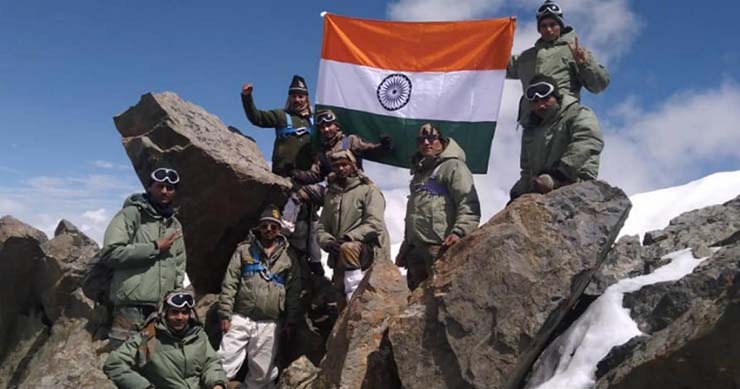
On 26 July 1999, 23 years ago, the guns fell silent after 83 days of intense fighting in the Ladakh and Karakoram ranges in the Himalayas. Prime Minister Atal Bihari Vajpayee admired the valour and determination of the Indian armed forces and declared the end of Operation Vijay as the Line of Control was restored. Kargil War was the fifth round of conflict between India and Pakistan since the partition of India on 14 August 1947. The British ensured, by drawing the Radcliffe line in western/eastern India while lowering Union Jack and declaring Pakistan as a separate nation out of India in 1947, that the Indian subcontinent remains a conflict zone forever.
The first round started in October 1947, when Razakars in massive strength, supported by the Pak military, in rogue convoy advanced on Muzaffarabad, Baramulla, and Srinagar axis displaying an orgy of violence, rape, loot and murder of locals. The war lasted for a full one year and as Indian forces were in process of gradually restoring lost territories, Indian PM Jawaharlal Nehru in a panic rushed to the UN, and a ceasefire was announced. Ceasefire Line was drawn under UN observers and India lost 78,114 sq km of the area to the newly-created Pakistan, although Srinagar was saved. Thus, the new term ‘Pak Occupied Kashmir’ (P0K) was coined.
The second round was initiated by Pakistan in September 1965 when Lal Bahadur Shastri was the PM. India after suffering initial reverses due to the ‘Op Grand Slam’, activated the Punjab front and was in a winning position as Indian troops almost reached Lahore. India accepted the USSR-mediated ceasefire and had to return almost 1920 sq km of area, including strategic HajiPir Pass, as part of the deal at the Tashkent summit. Lal Bahadur Shastri died in Tashkent under mysterious circumstances.
The third round was a knockout blow to Pakistan in the 1971 war. A new nation Bangladesh was born and East Pakistan ceased to exist and 90,000 Pak troops surrendered. The fourth round was fought in Siachen, the highest battlefield in the world in 1985 called Operation Meghdoot. The master stroke was the occupation of Quid-e-Azam Post and the dominance of Saltoro ridge. Kargil War, the fifth round, was conceived in 1987 and executed in 1999 by Pak Army Chief General Pervez Musharraf to take revenge for Siachen’s debacle during which he was an army Major and had witnessed the massacre of his SSG Company.
The peace process was initiated in February 1999 by Atal Bihari Vajpayee and positively responded to by Pak PM Nawaz Sharif. Vajpayee travelled by Sadbhavna Bus to Lahore on 19 Feb 1999 along with a celebrated civil delegation including Dev Anand, Satish Gujral, Javed Akhtar, Kuldeep Nayar, Kapil Dev, and Shatrughan Sinha. General Musharraf did not attend the important function as Pak troops were in the process of intrusion in Kargil heights defying orders of his own prime minister as Indian brigade in Kargil-Dras sector had gone into winter mode in Dec 1998, vacating avalanche-prone snow-bound dominating heights.
Koh Paima strategy
Operation Koh Paima, also called Op Badr, the brainchild of General Musharraf, was already underway when the Lahore Declaration was being signed between two prime ministers on 21 Feb 1999. ‘Koh Paima’ was a warfare strategy of Napolean Bonapart, who adopted it in many wars meaning infiltrating secretly rapidly from narrow points and spreading fast in the rear of frontline enemy troops. The top secret plan was known to Lieutenant General Aziz Khan, Chief of Staff, Lt Gen Mahmud Ahmed (10 Corps commander) and Major General Javed Hasan who was the force commander of Northern Area ( Division level force comprising four brigades).
The force had ten Northern Light battalions (NLI) composed of Baltistan mountain tribes, Sindh and Azad Kashmir battalions and a Special Service Group (commando force). The intruding force divided into three Task forces was inducted into the Muskoh-Dras subsector (6 NLI, 12 NLI and 3 companies of Special Service Group commandos under Task Force 1) TF1, Kaksar subsector (4, 13 NLI and affiliated troops TF 2) and Baltik/Yaldar subsector including Chorbat La (3, 5 and 8 NLI formed TF 3) on Ladakh/Karakoram ranges.
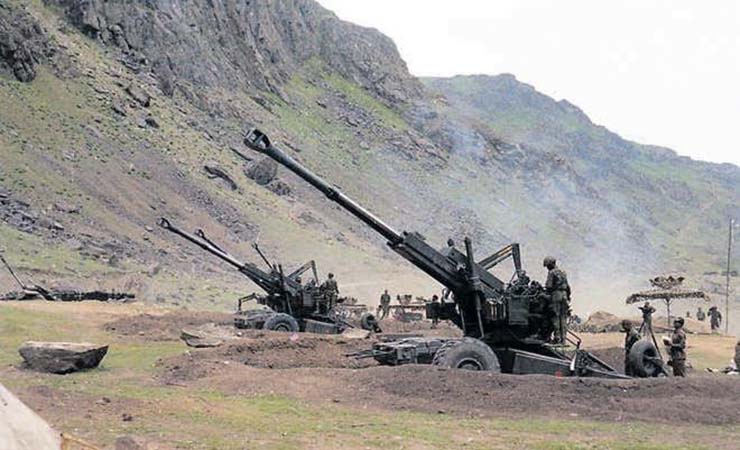
These task forces were air maintained initially and later well stocked and had logistics bases at Marpo La and Sanguti. All Pakistani troops were in traditional salwar kameez civil dress acting as Mujhadeens/terrorists. Surprisingly, these Pak troops remained in inclement weather, dizzy heights, and deadly blizzards, deep inside LOC for three months undetected until a few Bakarwal shepherds informed the commanders at end of April of the presence of unknown troops above Kargil and Dras towns.
Kargil District is today part of the Union Territory of Ladakh. Kargil heights in 1999 were part of Jammu Kashmir state, located in Ladakh ranges and was the responsibility of Srinagar corps HQ, which was under the jurisdiction of Northern Command of the Indian Army. The National Highway (NH 1) connecting Srinagar to Leh passes through Sonamarg, Baltal, Zojila Pass, Ghumri, Dras, Kargil, Lochum bridge on Indus, and Nimmu in this zone. NH 1 is the lifeline for the Leh garrison and for logistics support of troops deployed in Eastern Ladakh. Dras and Kargil Heights are overlooking the NH 1 and if occupied by the enemy, observation posts can monitor the movement of convoys and can be interfered with by accurate enemy artillery shelling.
The fog of uncertainty was cleared by the first week of May 1999. General Krishan Pal, the corps cdr, gave his final assessment to army commander Lt Gen H M Khanna that it was not a militant intrusion but regular troops consisting of Division minus of Pak Army with Arty support occupying Ladakh range from Mushkoh Dras to Yaldar in 3 pockets. No doubt it was an intelligence failure but as the situation was clear, two divisions were inducted into the war zone. It was the fastest ever mobilisation. During the initial reconnaissance stage, three patrols of 3 Punjab were sent at Bunji to confirm enemy presence. A patrol led by Capt Saurabh Kalia near Bajrang post was taken prisoner on 3 May and later killed brutally on 9 June.
Ferocious response
The response of Indian troops was ferocious; 8 SIKH recaptured Point 4256, Point 4440, and 16 Grenadiers captured Point 4480 by 12 May 1999. General VPS Malik reached Kargil on 18 May and boosted the morale of Indian troops involved in the battle. The government sanctioned the use of the Indian Air force on 26 May. Operation Safed Sagar was launched by IAF with 7 combat squadrons and one Helicopter sqn. Two fighters and one modified MI 17 gunship were lost to enemy fire. Later, Mirage 2000 ruled the sky and inflicted heavy destruction on enemy assets. Five regiments of 155mm Bofors guns reached the war zone and played merry hell on enemy entrenched troops. On 13 June, 56 Brigade captured Tololing and Point 4590. Area Point 4760, Black Rock, 3 Pimples were captured on 29 June. Tiger Hill battle was won on 4 July breaking the spine of the Pak Army.
Pakistani troops, in traditional salwar kameez, surprisingly remained in inclement weather and deadly blizzards, deep inside LOC for three months undetected, until shepherds informed the commanders in April end about the presence of unknown troops above Kargil and Dras towns
Nawaz Sharif rushed to the USA to request the US president to speak to Indian PM for an immediate ceasefire. The same day, Muskoh and Dras area was recaptured and cleared. From 12 July to 18 July, Pak troops’ withdrawal was permitted. Zulu Spur was taken by the 192 Brigade on 24 July. Western Ladakh range was cleared and the sanctity of LOC was restored. On 26 July 1999, the Indian PM declared the conclusion of Operation Vijay, and India achieved its objective by recapturing the entire territory. The cost of victory was high as 22 gallant officers, 21 JCOs and 452 brave soldiers made supreme sacrifice. Pakistan too suffered heavy casualties and lost almost 1200 soldiers. Kargil War, the fifth round was over. The Himalayas witnessed silently how yet another assault on India was repulsed by gallant Indian soldiers.
There are many sung and unsung war heroes of the 1999 Kargil War. Some valour stories are presented to motivate the young generation.
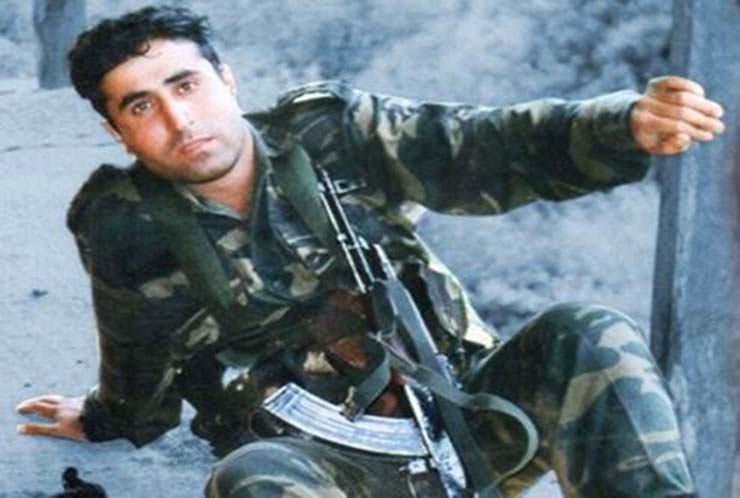
Captain Vikram Batra (13 JAK) Paramvir Chakra (posthumous)
Known as Sher Shah in Kargil War, Captain Vikram Batra was commissioned into the 13 Jammu Kashmir Rifles on 6 December 1997. The officer was born at Palampur in Himachal Pradesh on 9 Sep 1994. His father Girdhari Lal was a principal at a Local Government School and his mother Kamalkanta was a teacher. He joined Indian Military Academy (Manekshaw battalion) in June 1996 as a Gentleman cadet and passed out after 18 months of tough training as a lieutenant. On 5th June 1999, 13 JAK Rifles got orders to move to the Dras sector in Western Ladakh for Operation Vijay, the Kargil War.
The Pakistan troops had crossed the Line of Control in winters and firmly entrenched on mountain tops of Ladakh Range, causing heavy casualties to Indian forward troops on Srinagar Leh National Highway. The Battalion was tasked to regain Point 5140. He volunteered to lead the attack on Point 5140, which was heavily defended by a platoon assisted by Medium Machine guns (MMGs), Rocket Launchers (RLs) and Mortars. The commanding officer Lt Col YK Joshi (former Northern Army commander) asked for a success signal, Sher Shah selected ‘Dil Mange More’. His team captured the feature 5140 on 6 July 1999 after a fierce battle with some casualties. After reorganisation he gave the success signal. Meanwhile, there was heavy fire coming from neighbouring height Point 4875. The CO ordered immediate action as it was another dominant peak on LOC and had to be captured. Another company was detailed for the task but Vikram volunteered again. The CO told him that he must be tired after the ops on 5140 and advised him to cool down. Vikram Batra finally convinced the CO to go again. He led the assault on Target Peak 4875. They cleared 3 sangars but during the fourth sangar assault, his buddy got badly injured. He pulled him behind a boulder safely and continued the assault. Once exposed, he was badly hit by a volley of Light Machine Gun. He crawled to the bunker profusely bleeding and lobbed a grenade. The last sangar was silenced and following troops captured Point 4875. Indian Tricolor was placed on top. LOC was restored in the Dras sector. Col Joe renamed Point 5140 as ‘Batra Top’. Capt Vikram Batra was called the Hero of the Kargil War and was awarded Param Vir Chakra posthumously for conspicuous bravery, gallant action, resolute leadership, firm determination in face of the enemy and supreme sacrifice.
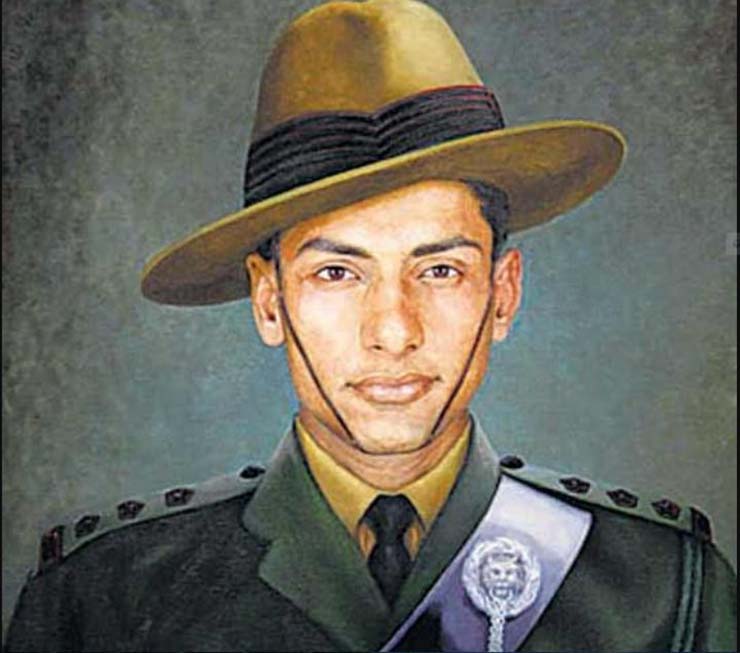
Lt Manoj Pandey (1/11 GR) Paramvir Chakra (posthumous)
During his Service Selection Board interview, Manoj Pandey was asked by Presiding Officer why he wanted to join Army. He firmly replied, ‘to win Paramvir chakra.’ And true to his words, he won PVC in the Kargil War though posthumously, in the best traditions of the armed forces. Lt Manoj Pandey was born at Village Rudha, Distict Sitapur, UP on 25 June 1975 in a middle-class family. His father was Gopi Chand Pandey and his mother’s name was Mohini Pandey. He joined National Defence Academy and later passed out from IMA. He was commissioned into 1/11 Gorkha Rifles in 1998.
Nawaz Sharif rushed to the USA to request the US president to speak to the Indian prime minister for an immediate ceasefire. On 26 July 1999, the Indian PM declared the conclusion of Operation Vijay
The 1/11 GR was ordered to move to Western Ladakh in May 2021 and was allotted to Yaldar Sector. The enemy was firmly deployed in Kalubar Hill and Jabuar Top and inflicting heavy casualties on climbing troops. Manoj Pandey was in the leading assault team. There were only a few boulders for cover. No move could take place during the day. The assault was launched after midnight under cover of darkness. Lt Manoj bravely approached Sanger along with his team and killed enemy soldiers with a sharp khukri. They cleared a few flanking sangars also and captured Kalubar hill. Now, while heading for Jabuar top, his column was daylighted and faced a heavy volley from Jabuar top post. He sustained multiple bullet wounds but he continued firing and motivating the troops. The Gorkhas beheaded the rest of the enemy troops. The battle was over. Kalubar and Jabuar were captured but Lt Manoj Pandey made the supreme sacrifice for the integrity of the motherland. Brave never die. For the gallant action, unparallel bravery to capture Kalubar Hill and restoration of area up to LOC, Lt Manoj Pandey was awarded Paramvir Chakra, the highest gallantry award.
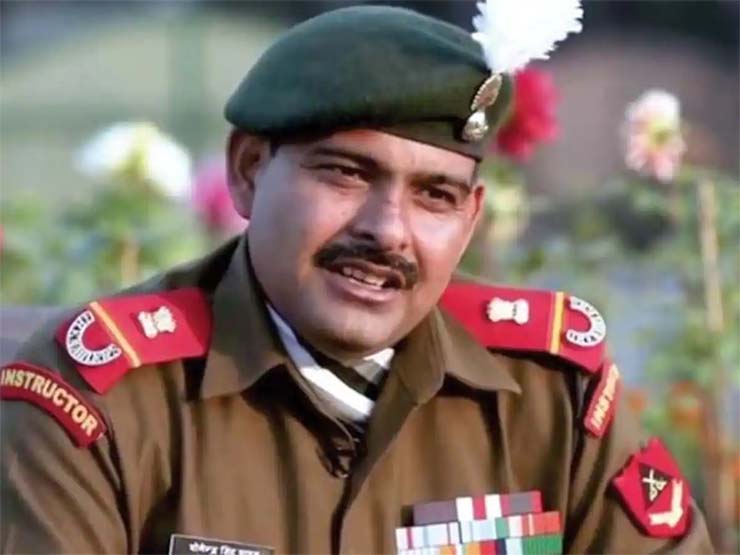
Grenadier Yogender Singh Yadav (18 Gren) Paramvir Chakra
He said in an interview with Door Darshan News, “A soldier has a selfless devotion to the motherland and his regiment and for the integrity of the nation and safety of his fellow soldiers, one does not hesitate to risk his life.” You cannot miss these live heroes in forefront of the Republic Day Parade every year. Gren Yogender Singh was born at Sikandrabad, district Bulandshahr in UP on 10 May 1980. His proud father Karan Singh Yadav is a farmer and his mother is Santara Devi. He was just 19 years old when he was bestowed with the highest gallantry award.
In early June 1999, 18 Grenadiers moved to the Kargil Dras sector. Heavy firing by enemy sitting on heights was in progress. Pak Artillery was taking a heavy toll on convoys on National Highway 1 directed by Ops on Tololing Ridge. The unit was tasked to capture Tololing Top on 10 June 1999. The height of the feature was 16,800 feet and with near zero temperature even in the summers. The assault was launched on 12 June and the unit suffered heavy casualties of 2 officers, 2 JCOs, and 21 troops and 30 soldiers were severely injured.
Gren Yogender Yadav was the leading scout of the Commando platoon. The commandos took the rear cliff approach. They climbed with help of slithering rope. He lobbed the grenade from the rear and killed all in the bunker. While neutralising the second sangar, he was hit by several bullets. He crawled to the last active post. Commando platoon was by now reduced to half. There were dead and injured all over. In the last, he killed 4 Pakistani soldiers with another grenade. Tololing Bastion was destroyed and sounded the first victory all for Indian forces. LOC was reached in the Tololing area. Gren Yogender Singh Yadav was evacuated by Air to Army Hospital, Delhi almost dead but survived. For conspicuous gallantry in face of the enemy, steel determination, and playing an important role in the capture of Tololing Top, he was awarded PVC. He has retired as Honorary Captain.
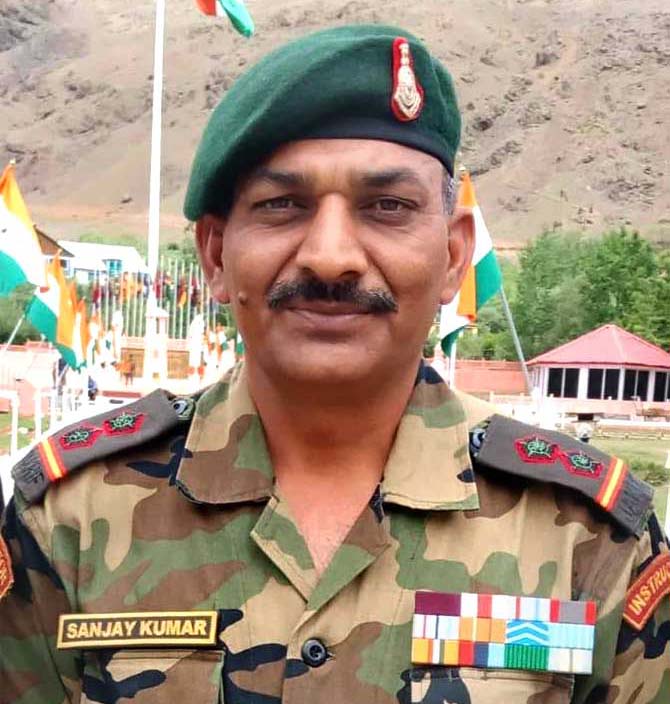
Rifleman Sanjay Kumar (13 JAK Rif) Paramvir Chakra
He was enrolled in 13 Jammu Kashmir Rifles in 1996. He was born in March 1976 at Village Kaloi Bakain in Bilaspur district, Himachal Pradesh. His father was Durga Ram and his mother Bhag Devi used to fondly call him Sanju. He was determined to join Army since his school days and was a good long-distance runner.
The battalion under Col Y K Joshi had moved to Ghumri and later to the Muskoh subsector in Dras area. The forward companies captured Point 5140 led by Capt Vikram Batra but Point 4875 was still occupied and taking a heavy toll on our troops. On 5 July 1999, as the initial assault had stalled at 4 am, the depth companies were launched. Area Flat top was interfering with heavy automatic fire from Universal Machine Gun (UMGs) and Grenade launchers. Rifleman Sanjay Kumar along with his buddy the leading scouts. The first sangar opened up with heavy fire. The assaulting column was pinned down. Sanjay told his buddy to give cover and charged at the post. He was hit in the shoulder and fell down but continued crawling and entered the sangar from the rear. The fire continued from the depth locality. The company commander advised him to be evacuated as he was bleeding. Rifleman Sanjay rushed to the next sangar, which surprised the enemy. They abandoned the Depth UMG post. By now, Sanjay had finished his ammunition. He picked up an abandoned machine gun and shot the fleeing four Northern Light Infantry soldiers to death. Area Fiat Top was captured, which helped in the capture of Point 4875. For displaying devotion to duty, conspicuous courage and gallant action in face of the enemy, Rifleman, now Subedar, Sanjay Kumar was honoured by President with Paramvir Chakra.
The following heroes received Mahavir Chakras the second highest gallantry award during the Kargil operations. Major Rajesh Adhikari ( P) 18 Gren, Tololing Ops, Lt Balwan Singh ( 18 Gren ) Tiger Hill Ops, Capt Anuj Nair (P) 17 JAT Pimple complex Muskoh, Major Vivek Gupta (P) Tololing, Major P Acharya ( P) Knoll, Capt N Kenguruze ( P) Knoll, Naik Digendra Kumar, Tololing (all four awardees from 2 Rajputana Rifles), Sepoy Imli Akum Ao, 2 Naga, Muskoh Point 4875. Lt KC Nogrung (P) 12 JAK Light Infantry bn Point 4812 Yaldar sector. Squadron Leader Ajay Ahuja of IAF of Golden Arrow sqn was awarded Veer Chakra posthumously.
The 10 lnfantry battalions were also awarded Battle honour and Special citations from the Chief of Army Staff and were titled ‘Bravest of the Brave’ namely 8 Sikh, 18 Grenadiers, 17 Jat, 18 Garhwal, 2 Rajputana Rifles, 13 Jammu Kashmir Rifle, 1/11 Gorkha Rifles, 2 Naga, 1 Bihar, 12 Jammu Kashmir Rifles. There are many unsung soldiers who made supreme sacrifices or were severely wounded for the safety and integrity of the nation. The whole country stood united beyond religion, caste, and creed and beyond party lines. War heroes especially those who did not come back will be remembered forever by the grateful nation.
-The writer is an Indian Army veteran and a defence analyst. He has keen interest in Geo-strategic affairs and writes regularly on internal and external affairs issues related to India and neighbours. The views expressed are personal and do not necessarily reflect the views of Raksha Anirveda.








